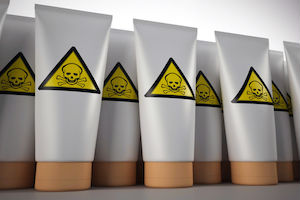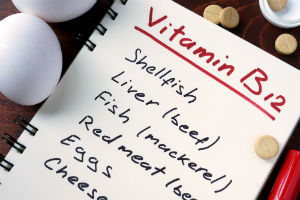|
Friday, October 30, 2015
19 Chemicals to Avoid in Skin Care – Organic Skin Care
Wednesday, October 28, 2015
How to be great!
My good pal Lewis Howes just released The School of Greatness: A Real-World Guide to Living Bigger, Loving Deeper, and Leaving a Legacy. When we met over a year ago, I had no idea we would become such great friends and I would learn so much from him.
We've shared business & life advice, he invited me to be on his amazing podcast to help spread the word about good food, we've even shared mega stages together speaking to audiences and the rest is history!
I asked Lewis a few personal questions to share with you, so you can get a glimpse into how he operates in his daily life. Spoiler alert: He's a green juice lover too – it's the key to being great, ya know?! And there's a fun giveaway for a signed copy of his book just for you. Check it all out here (and make sure you leave a comment by Friday for your chance to win!).
You can also be great, first of all by not poisoning the neighborhood children this weekend during Halloween!
If you are planning a get together or need healthy snacks for the big night, I've got you covered.
- Apple Pie Chia Pudding (New breakfast or dessert recipe!)
- Creamy Kale & Artichoke Dip
- Roasted Pumpkin Spice Nuts
- Healthy 7 Layer Dip
- Thai Pumpkin Soup
- Halloween Sweet Potato Black Quinoa Coffins
Happy Halloween!!!
Xo,
Vani
P.S. Oh and don't forget this nice list of organic and non-GMO treats without artificial food dyes, trans fats and preservatives.
If you would like to stop receiving free food investigations, recipes and healthy living tips, click here.
Tuesday, October 27, 2015
The Role of Probiotics and the Gut Microbiome
|
Friday, October 23, 2015
Do You Know These Sources of Vitamin B12?
|
Thursday, October 22, 2015
Organic.org
Organic.org |
| Surprising Facts You Didn’t Know About Pumpkins Posted: 22 Oct 2015 11:20 AM PDT While you sip on that pumpkin spice latte, consider these unusual pumpkin facts about your favorite fall produce. Maybe you want to know why pumpkins fit so effortlessly into sweet and savory dishes, like pumpkin ravioli and pumpkin pie. Perhaps you are curious about how early American settlers used this foreign gourd for cooking, or why we carve faces into pumpkins on Halloween. Pumpkins haven't always been as popular as they are today. In fact, pumpkins were hardly eaten by people for a considerable part of the 19th century. Hard to believe considering pumpkin spice seems take over our taste buds every fall season. No food is above a little help from pumpkin spice: Pumpkin flavored yogurt, coffee, candies, and even English muffins are cropping up on our supermarket shelves. This fall season while you snack on your artisanal pumpkin [insert food here]; consider the facts about this versatile, tasty treat to discover how pumpkins went from the bottom to the food chain to the top of fall food trends over the past several hundred years 1. 45 Different Varieties of PumpkinsWhile the round orange pumpkin is the most recognizable pumpkin, pumpkins come in many different shapes, sizes, and colors. Some of the cleverly named pumpkin varietals include, Halloween in Paris from France, Cinderella (the varietal cultivated by the Pilgrims), and Wee-Be-Little a miniature pumpkin varietal.2. Irish Jack-O-LanternsThe tradition of carving pumpkins originated in Ireland. The Irish would carve jack-o-lanterns out of turnips to scare away evil spirits during the Celtic holiday Samhain, the night when spirits of the dead would walk the earth.3. October = Pumpkin Month80 percent of the pumpkin crop in the U.S. is available during October. That is roughly 800 million pumpkins out of the 1 billion pumpkins grown in the U.S. each year.4. "Pumpkin Capital" of the WorldMorton, Illinois is the self-proclaimed pumpkin capital of the world. Illinois is one of the largest producers of pumpkin in the United States with 90 to 95 percent of its crop being used for processed pumpkin foods.5. Pumpkin SeedsPumpkin seeds contain more protein than peanuts and are a wonderful roasted with spices or salt. Sprinkle pumpkin seeds on top of salads or eat as a snack on their own.6. Pumpkins are 90 Percent WaterAdmittedly, this is less of a surprising fact when you consider that pumpkins come from the same family as the watermelon and cucumber.[via The Daily Meal] |
| You are subscribed to email updates from Organic.org. To stop receiving these emails, you may unsubscribe now. | Email delivery powered by Google |
| Google Inc., 1600 Amphitheatre Parkway, Mountain View, CA 94043, United States | |
Wednesday, October 21, 2015
A sudden twist of events. WE DID IT!
I had my bags packed and ready to go to deliver over 250,000 petition signatures with several consumer advocacy groups to Subway headquarters this week but all my plans came to an abrupt halt.
Subway just announced that they have committed to eliminating the use of antibiotics in ALL of their meat in the U.S. – and they also provided a timeline.
It's never felt so good to cancel my plans!
We did it! This is a huge victory!
None of this could have happened without you and the incredible consumer advocacy groups I've been working with.
Working together we can move mountains and we've just moved the largest fast food chain in the world. This announcement is going to send shock waves through the entire meat industry! It will take time, but major progress is being made.
Read about the juicy details and events that led up to this breaking announcement here.
It's people like you that are willing to take the simple act of signing a petition and sharing it, that is truly changing the food landscape in this country.
Just a few short months ago, Subway was silent on this issue and didn't want to take a stand, and now everything has changed because of you making your voice heard!
No matter who you are – vegan, vegetarian, or organic foodie – you could be infected with antibiotic resistant bacteria, which kills about 23,000 Americans every year.
Getting the overuse of antibiotics off of our farms is a crucial step in preventing thousands of illnesses caused by superbugs.
The power of consumer activism continues to amaze me.
I thank Subway on behalf of many for addressing this very critical public health issue. Can't wait to see the other dominos start to fall. Who do you want to see next? Tell me in the comments of this post!
Sending you all a virtual HIGH FIVE and lots of love!!! Thank you for making history with me, once again!
Xo,
Vani
P.S. If you've got information about the food industry you can't share publicly, we are always open to hearing from you – I want to learn everything I can to project the public interest. Simply reply to this email or use this contact form and select "whistle-blow" as the reason. I thank you for your courage in advance.
If you would like to stop receiving free food investigations, recipes and healthy living tips, click here.
The 5 Best Foods for Leaky Gut
|










